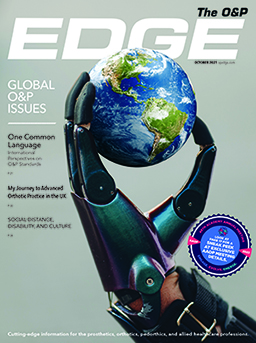Annual Follow-up Visits Important for Upper-limb Amputees
September 22, 2021
A longitudinal cohort study followed 64 prosthesis users with upper-limb loss or limb deficiency using their own prostheses to assess change over time.
Objectives of the study aimed to describe prostheses and terminal device types used at baseline and one-year follow-up; to examine changes in functional outcomes and device satisfaction over time; and, finally, to examine whether changes in outcomes varied across level of amputation and type of prosthesis used. The study was a multisite, observational time series with in-person functional performance and self-report data collected at baseline and one-year follow-up.
The study found that most of the 64 participants (mean age 64 years, 56 percent body-powered users) had stable outcomes over a year's time, whereas 14 to 20 percent experienced either improvement or decline in one or more tests indicating the importance of annual follow-up visits.
Baseline and follow-up outcome scores were compared using Wilcoxon signed-rank tests. Analyses were stratified by amputation level, time since amputation, prosthesis type, and change in device type. Published minimal detectable change (MDC) values were used to determine whether detectable change in outcome measures occurred.
Results of the study showed that the only significant differences with the participants in outcome measures between baseline and follow-up (after adjustment for false discovery) were hours/day of prosthesis use, which increased from 6.0 (4.4) to 7.3 (5.3) hours (P = 0.0022). Differences in prosthesis use intensity remained significant in analyses stratified by amputation level, time since amputation, prosthesis type, and change in device type, the study found. Between 14 and 20 percent of the sample had change in one or more outcome measures that was greater than the known MDC.






-
-
-
-
CONTACT US